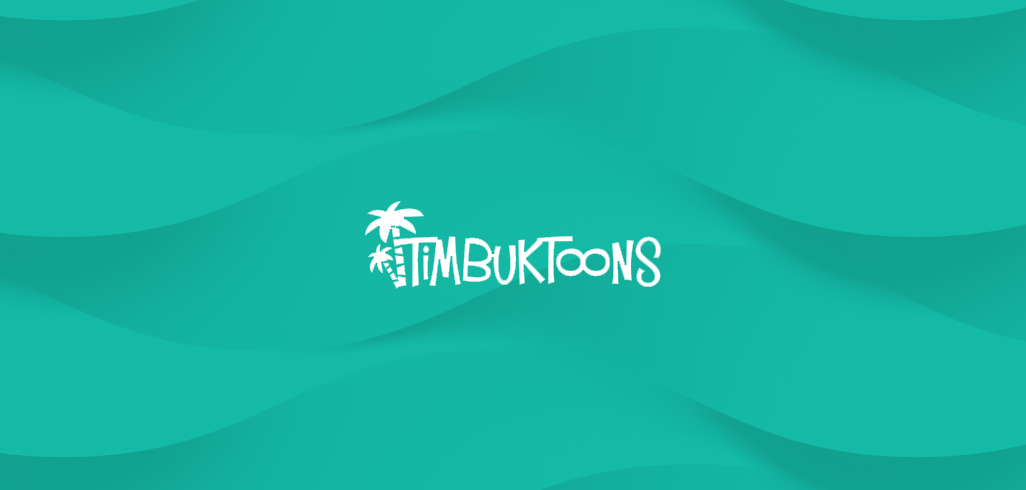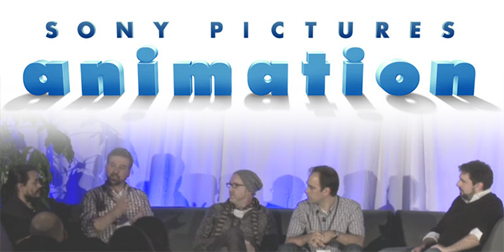
A Rare Behind the Scenes Look Inside Sony Pictures Animation

The CTNX 2011 workshop “From Pitch to Picture” takes you inside the creative environment and development process at Sony Pictures Animation.
How does an animation studio discover an idea for a film and what is the development process?
In the CTNX workshop, “From Pitch to Picture,” Sony Pictures Animation’s Senior VP of Creative Development Michael Lachance and a distinguished panel of Sony’s artists lead a a rare and candid open session that takes you behind the scenes of the creative environment and development process, where ideas become movies.
Development (especially Visual Development) is my favorite part of the animation process so I was really excited to preview this workshop.
Also, the timing was perfect since I just got back from LA where Marcelo Vignali (one of the panelists) graciously gave us a tour of Sony Pictures Animation and Sony Pictures Imageworks.
From Pitch to Picture: The Creative Process at Sony Pictures Animation
Moderated by: Michael Lachance, Senior Vice President, Development, Sony Pictures Animation (IMDB)
Troy Quane, Director/Story Artist (IMDB)
Fergal Reilly, Director (IMDB)
Doug Sweetland, Director (IMDB)
Marcelo Vignali Production Designer/Visual Development Artist (IMDB)
There is a very healthy studio culture at Sony and three key concepts that really impressed me during our time at Sony as well as in this workshop, were:
- Letting Story Drive the Medium
- The Importance of Character and Story in Animation
- Development As a Collaborative Process
Because of the open/casual format the conversation ping-ponged back and forth thru various topics and films. It was extremely fun to listen to and quite like taking a drink of water from a fire hydrant.
For simplicity’s sake, I’ve categorized key comments and ideas into these three general categories. For the most part I have not listed which panelist said which comment because they all had input for each idea. In some cases I cited the speaker (in parentheses) for contextual clarity.
For an overview of Sony Picture Animation and Sony Pictures Imageworks’ history, structure, partnerships, and upcoming films, check out the Wikipedia company overview.
Letting Story Drive the Medium
- We don’t have a house style. Sony let’s story drive the medium:CG, Mocap, live action/animation merge, stop motion, some 2D
- In live action, you can hire a key actor to be the draw to carry the movie. Animation is a medium that deals in pixels or drawings and WE have to give them a soul, so we have to work harder at developing characters and develop great stories.
- For Aardman, we didn’t make it fit Sony. We let it have an Aardman look. Our philosophy is we want the directors to help drive the look of the film as well as the story.
- One challenge is translating literary materials for the animation medium. As good as a book is, it does not automatically translate to film. They are different mediums. Books are more internal, thought driven. Animation is a visual medium. You can’t have an internal sequence where no visuals are used. You need to find visual ways to solve these problems.
- One main reality of development is parameters. Budget. Schedule. These are also determining factors when choosing a medium.
- The Smurfs, A Christmas Carol was 6min CG, 6min 2D. Budget and story drove the decision. 2d was new for the studio but we want to do more.
- Sony seems more like an arthouse. Many mediums, no restrictions.
- (Vignali on) Surfs Up: Early in development it was very cartoony and playful. It didn’t have weight. The moment Cody catches the big wave, it had to be real. That wave was the visual driver. The water ultimately drove the design of the film. Story drove the visuals. Sony does this well. Sony does not have a house look. Each film is very different because the story drives the look. Sony is very good in this regard.
- (Vignali) We designers want to design, but that can trip us up. We need to let story drive the design.
The Importance of Character and Story in Animation
- (Lachance) When pitched, I ask myself, “Does this film have at it’s core, an interesting character?”
Plot is always driven by character. We look for characters we’ve never seen before, and a problems we’ve never seen before. - (Vignali ) Lion King is Shakespeare set 300 years later w/ a setting in Africa.
- In animation you have to create the soul. It’s not inherent.
- (Reilly) To create a successful character in animation you have to go to the characters primal fears. His hopes and dreams. The films we make are mythic in construction. The “relatability” to a hero character is core to our films. The closer you can get to a real desire and a real fear for your character the better it’s going to be. In animation we can go to places that are very deep and close to the core of who we are. We go to places of real fears and real desires and build characters and stories around that.
- Ideas aren’t story. You need it to come together and work.
- When you get deep into development, the characters and story begin to find their center and tell you what it needs to be. When characters take on their own personality, that’s when you know you are heading in the right direction.
Development As a Collaborative Process
- Every aspect of the film has to be created from scratch. Every element on screen has to be created from story to visuals.
- Cloudy for example. Early on it was too real. About the level of Ratatouille. Shots weren’t funny because they were too real. We made it more cartoony, more fun, then it worked. Giant food falling from the sky wasn’t taken too seriously. Development can be a messy process, but a good one. Many people responded to the look of cloudy.
- (Lachance) I get the director on board as soon as possible because the lead character is really the director.
- Sony does test segments, to pitch to executives. Sizzle pieces to sell to execs. Imageworks is a large company, so you need a small sub dept to help test visual ideas. That’s where the 3d Vis Dev Team comes in. You won’t see the quality of Imageworks pipeline, but it’s only 4-5 guys building a prototype of the film in 5-6 weeks. This crack team builds a short proof of concept. We do sizzle pieces for each film. As part of the development process we have to sell the idea to various department heads.
- Sony Animation is currently developing Popeye as a feature. Vignali used original comic strips as inspiration.
- The thing that’s challenging with Popeye is that he’s had several iterations. How do we make him relevant to kids who grew up on Pixar and Dreamworks but still make it connect for those of us who are older and remember watching the original cartoons?
- (Vignali) How do we keep it true but make it fresh. Why go see it if you’ve already seen it. But you can’t go too far. It has to be Popeye. You need the balance of the two so people don’t disconnect. We looked at where others had made faithful translations and where it didn’t work.
- (Quane) How do you develop a story around a character that has 70+ years of mythology with him? It’s a balancing act to introduce this character to a new generation, but not go to far away from original.
- Sony allows a process to happen.
- (Lachance) Our approach to Popeye is, “We can’t rely on people’s notions of Popeye to carry the audience. We have to make the audience care about him as if they have never seen him before. We have to make people care about the character in the first 10 minutes of the movie or we lose them completely.”
- Without deadlines we would never finish.
- (Vignali) This business isn’t about how good you are, but how good you work with a team. Animation is collaborative and you need all the other departments and people.
- You won’t always see eye-to-eye, but good team members support each other and serve in their role.
- Flexibility is an asset.
- The whole thing is a conversation.
- As a director, it forces you to have conviction because everyone has different
- (Reilly) Brad Bird (at Warner bros) would make you challenge him to bring out the best. Even if he believed in his stance, he would make you challenge him.
